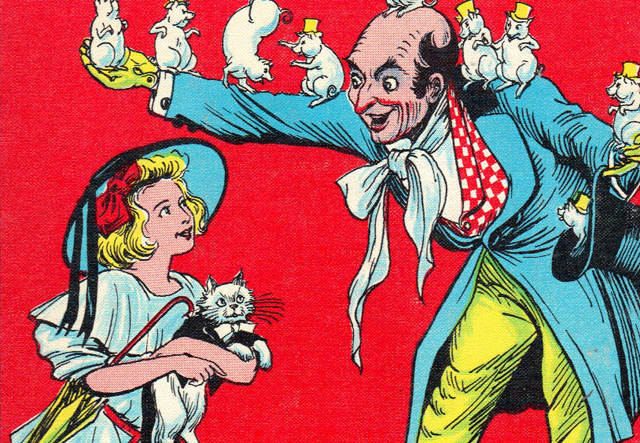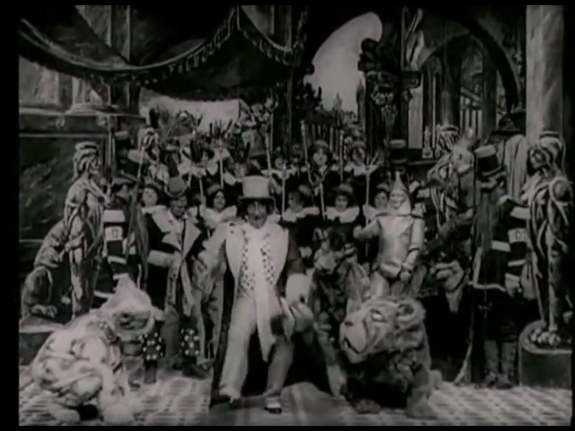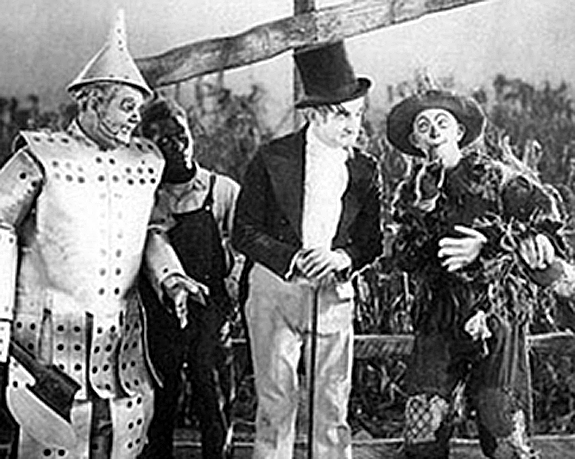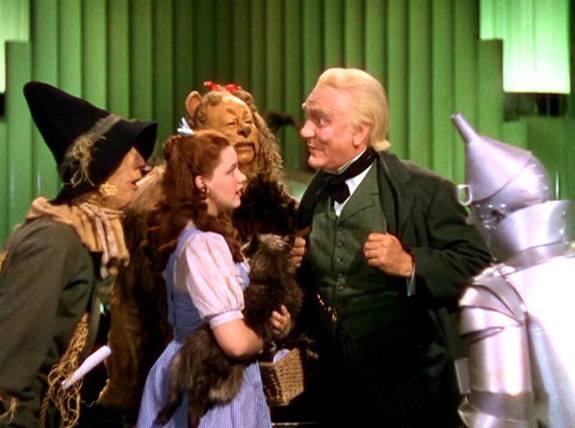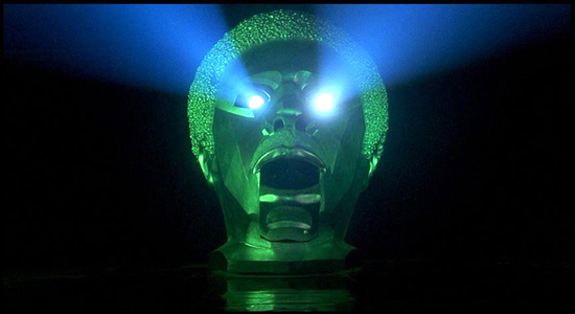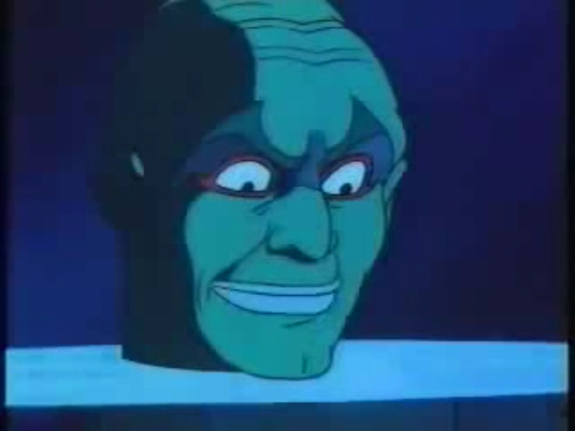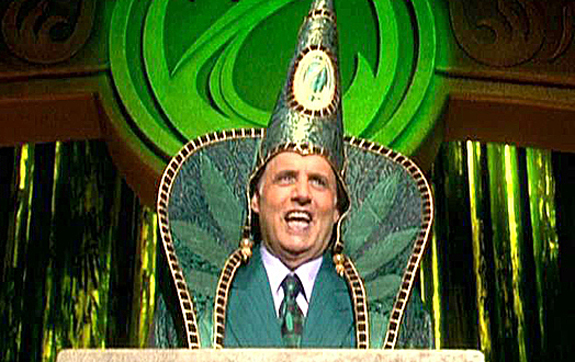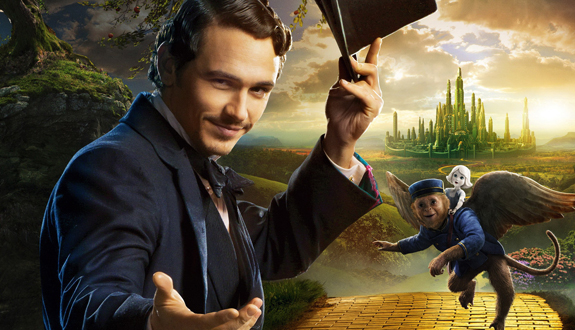Fairy tales have had a long history of success in both literature and in cinema. And key among it’s strengths have been the larger than life adventures of magical creatures in far off places that help to transplant audiences out of reality, whether they be fairies, witches, monsters, or wizards. Though fairy tales are popular around the globe, they have primarily come from European origins. That was until American author L. Frank Baum added his own fantastic tale to the mix when he wrote his now iconic 1900 novel, The Wonderful Wizard of Oz. Though inspired by traditional fairy tale tropes, there’s no denying that Baum’s classic is the first distinctively American fairy tale. Telling the tale of Dorothy Gale, a rural girl from the heart of Kansas, Oz is an unforgettable journey that has captured the imagination of readers for over a century. It also marks a transition in the fantasy genre as it moved away from it’s European roots. By creating a fully realized world in Oz, Baum was also introducing the concept of world-building into the fantasy narrative, which has since become a common characteristic of fantasy writing ever since. The the multi-layered worlds of Middle Earth, Narnia and Westeros all have their roots in the foundation that Baum laid out when he created the land of Oz. But, it’s not just the amazing spectacle of the land over the rainbow that has sustained the story’s popularity. It’s also the characters, many of whom are now icons of the genre.
For the most part, the characters have changed very little through all the many different literary iterations over the years. Dorothy has always remained the innocent child trying to find her way home, and her companions The Scarecrow, the Tin Man, and the Cowardly Lion have likewise all stayed true to form. The villainous Wicked Witch of the West has seen more varied interpretations over the years, though more often than not still firmly placed in the role of the antagonist; the popular revisionist musical Wicked being the notable exception. But if there’s a character whose portrayals have departed more frequently from the books over the years, it would be the titular Wizard himself. The Wizard is certainly one of L. Frank Baum’s more interesting creations. Once thought to be a great, all powerful Wizard, he is by the end of the story revealed to be (spoilers) just an ordinary man. And not only just any ordinary man, but an outsider like Dorothy who has found himself cast away to Oz after being caught in a tornado. His talents as a magician helped to convince the local people that he had magic of his own, and it’s probably what helped to elevate him into power, as an alternative to the Wicked Witches of the East and West. But, to keep up the charade, the Wizard uses the tried and true smoke and mirrors routine to make him a figure meant to be both feared and respected. Though distinctively drawn in the original story, The Wizard is also the one character that is the most open to interpretation, which has been the case in most of his movie versions. So, in this article, I will be looking at the many cinematic faces of magician Oscar Diggs and see how he’s evolved as the Wonderful Wizard of Oz over the years on the big screen.
HOBART BOSWORTH from THE WIZARD OF OZ (1910)
The immediate success of The Wizard of Oz at the turn of the century naturally extended out into other mediums, including the emerging art-form of cinema. The elements of the story lend themselves perfectly to the film medium. Even L. Frank Baum wrote and directed a couple of these himself. This 1910 adaptation was not one of those, but it is one of the better versions of the story to come out during this period. Like most other films made during these early years of cinema, the production is restrained by the limitations of the time, and most of the movie is made up of tableau shots that condense the story down to it’s bare bones. It’s more of a showcase for set and costume design rather than plot and character development; much like Georges Melies’ A Trip to the Moon (1902). But, even still, Baum’s story is still recognizable in those short 13 minutes, and one of the standouts is the Wizard himself. The film does away with the disguises that the Wizard has used before in the story, and instead presents the man just as the true magician that he is. It’s a jovial performance from veteran vaudeville actor Hobart Bosworth, who perfectly encapsulates the top hat wearing entertainer that L. Frank Baum visualized, even if it’s perhaps a little too slap-sticky at times. But, even for a movie made in the early days of film, it does represent a fresh start for such an iconic role.
CHARLES MURRAY from THE WIZARD OF OZ (1925)
Now while effort was put into the 1910 version in order to stay faithful to the original novel, the same cannot be said about this 1925 version. In this retelling, there are no witches and no magic. Instead, Oz is a far away kingdom here on Earth that is ruled by a cruel emporer who has usurped the throne from the rightful heir, Dorothy. You heard that right; Dorothy is a princess of Oz in this version, and she’s not even the main character. That would be the Scarecrow, or rather a farmhand who disguises himself as a scarecrow. The reason for this change is because the whole film was meant to be a showcase for comedian Larry Selmon, who plays the Scarecrow part. To spotlight the actor, they reworked the story around him, even if it doesn’t resemble anything like the original. This lessens the effectiveness of the characters and the setting overall, because it’s ignoring what made them so popular in the first place. But most problematic is the Wizard himself. He’s relegated to a minor henchman role. Sure, actor Charles Murray looks the part, but he leaves such little impact on the story that it makes you wonder why the movie is still titled after him. This is an odd interpretation of the classic story, and not surprisingly, audiences rejected it. It’s good to see that even early fans of the story held it up to high standards and dismissed this attempt to exploit the name for other purposes. Few other adaptations would stray far from the source novel in the years after.
FRANK MORGAN from THE WIZARD OF OZ (1939)
Now we come to what is undoubtedly the greatest cinematic interpretation of Baum’s classic, as well as the most iconic version of the titular character. 1939’s The Wizard of Oz is a masterpiece in every way possible, and rightly stands as one of the greatest movies ever made. Clearly made as response to the popularity of the animated musical adaptation of Snow White and the Seven Dwarves (1939), MGM Studios sought to take on another popular fairy tale and give it the grandest of treatments. Thankfully they saw the potential in Baum’s story and the movie production does the absolute best job making the land of Oz come alive and feel unlike anything we’ve ever seen. The characters are also what makes this such a beloved classic and each one is perfectly cast. This was especially true for Frank Morgan, who almost looks like he’s leaped right off the page as the Wizard. Not only does he do an amazing job playing the character, but he’s seen throughout the movie as various other people like the doorman of the Emerald City, as well as a traveling palm reader whom Dorothy befriends back home in Kansas. But, it’s the Wizard that really highlights his performance, especially when he’s going over the top as the giant floating head in the throne room scenes. Morgan’s performance is so iconic that every Wizard adaptation since has used his version as a base of inspiration. And indeed, no other version has ever felt truer to Baum’s vision. In this classic movie, it is indeed a treat to see the man hiding behind the curtain.
RICHARD PRYOR from THE WIZ (1978)
The enormous popularity of the MGM adaptation kept Hollywood from attempting another version of the tale for quite a while, but Motown Records saw an opportunity in the mid-70’s to take on the tale with a modern twist. The Wiz imagines the land of Oz as an urban Wonderland full of the musical sounds of Soul and Disco. The idea of taking the classic story and casting all the roles with African-American actors is certainly a welcome one, and that’s indeed what made it a standout when it appeared on Broadway. When the movie adaptation happened, the producers from Motown Records reached into their stable of recording artists in order to bring star power into the film, which had some mixed results. Some of the casting is spot on (Michael Jackson as the Scarecrow; Lena Horne as Glinda) while others are a little off (44 year old Diana Ross as the teenage Dorothy). But one of the more natural casting choices was legendary comedian Richard Pryor as the Wizard, or Wiz to be more appropriate to this version. Pryor brings his trademark bombastic comedy style to the role, and it’s a perfect match for the Wizard in his grandiose, giant head form. The image of the character is also a nice modern twist on the MGM version, with the shiny chrome head feeling both original and true to Baum’s version. But, once revealed as a fraud, Pryor also captures the timid man behind the curtain perfectly as well. It may be a revisionist take on a beloved classic, but it’s done with a great deal of admiration for the story, and the movie especially stays true to character with regards to the iconic Wizard himself.
LORNE GREENE from THE WIZARD OF OZ anime (1982)
Just to show how far reaching the legacy of The Wizard of Oz has spread, there’s even a Japanese anime version out there. And this one isn’t even the first one made, nor the last. The reason I wanted to highlight this version is because of two reasons; one, it’s the most faithful anime adaptation of the story, and two it’s because it has probably the most accurate interpretation of the Wizard that’s ever been put on film. In L. Frank Baum’s original story, the Wizard asks to meet Dorothy and her companions individually instead of all together. Interestingly, each character sees the Wizard in a different form. For Dorothy, the Wizard appears as a giant, green head; for the Scarecrow, as a beautiful winged angel; for the Tin Man, as a giant beastial creature; and for the Cowardly Lion, as a ball of fire. This 1982 anime, to my knowledge, is the only time I’ve ever seen these multiple versions of the Wizard actually envisioned. Even the MGM version strayed from the book here, choosing instead to present the Wizard in one form; the one that Dorothy sees in the books. That helps to make this version unique out of all the different adaptations, just because it went out of it’s way to accurately represent what’s in the book. Unfortunately, being too faithful also makes this version a little stilted and dull at times. Actor Lorne Greene of Bonanza fame performed the English dub for the Wizard, and the voice is a good match. I especially like the power in his voice when he plays the false versions of the Wizard. Though not the most exciting version of the story, this is certainly an interesting take on the classic, and offers probably the best visual representation of Baum’s Wizard that we’ve seen to date.
JEFFREY TAMBOR from THE MUPPETS’ WIZARD OF OZ (2005)
Here we have a version of the story built around the legacy of past versions, specifically the classic one from MGM. On paper you would think that a version of The Wizard of Oz starring the Muppets would be a home run. Unfortunately, this is not one of the Muppets’ stronger efforts and the whole thing is more of a cash in than anything else. There’s little effort in trying to be true to L. Frank Baum’s original story, and instead the movie is more concerned with mimicking the movie than the book, to which it does a fairly poor job of doing. The one exception in this version, however, is the casting of Jeffrey Tambor as the Wizard. Yes, he’s playing it over the top and completely out of character from the original, but he still brings gravitas to the role that’s missing from the rest of the film. The Arrested Development star has a gift for making pompousness funny, and that’s what he brings to this role as the Wizard. It’s the Frank Morgan version but without the humbleness, and that surprisingly works well here. Truth be told, I wish this version was in a better movie. Overall, it actually shows how well the story has aged over the years, where the archetypes of the characters are able to withstand a more cynical reinterpretation and still retain their dignity. Tambor does his best with what he has and helps to make the Wizard a standout in an otherwise pathetic retelling of the story.
JAMES FRANCO from OZ, THE GREAT AND POWERFUL (2013)
Though a supporting player in the novel that bears his name, the Wizard of Oz nevertheless still has an interesting backstory, seeing as how he has traveled from afar to the land of Oz by accident, just like Dorothy. Director Sam Raimi saw potential in this backstory and decided to delve into the Wizard’s past with this prequel to Baum’s classic tale. Oz, The Great and Powerful tells the story of how magician Oscar Diggs came to Oz and became the Wizard and ruler of the Emerald City. With the help of the good witch Glinda, the story shows Oscar using his tricks to outwit the evil Witches that have taken over Oz while at the same time learning a lesson about using his gifts responsibly and not to just satisfy his own needs. While a box office hit, some audiences were not pleased with the liberties that were taken with L. Frank Baum’s classic characters; most notably the witches, and some of those complaints are justifiable. The miscasting of Mila Kunis as the Wicked Witch of the West is especially problematic. But there’s still a lot that I like about this movie, and chief among them is the casting of Franco as the future Wizard. He may not be to everyone’s tastes, but I actually enjoy his oddball performance here. He definitely captures the huckster qualities of the character perfectly, and some of his over the top performance choices are definitely enjoyable. It’s interesting to see the world of Oz presented in a time before Dorothy, when darker forces were in control. It’s also the one and only time we see the Wizard hold his own as the center of the story, and overall, I like what they did with the character here. This may not be what Oz purists want to see presented on the big screen, but I think it does a serviceable job of expanding upon the world that L. Frank Baum imagined over a century ago.
Out of all the many characters who call Oz home, The Wizard is the one character that translates the best over the many different iterations of the story. Dorothy, the Wicked Witch and the other fantastical characters are so iconic that they must be done a certain way or else they won’t work at all, but with the Wizard there really is no right or wrong way to bring him to life. He is the most adaptable character of the story. I think that it’s why so many found it suitable that he should get his own movie with Oz, the Great and Powerful. The role is also easy enough to fill with any kind of actor you choose, making his many different versions so varied over the years. It’s the only kind of role where you can have Richard Pryor play him in one version and Jeffrey Tambor in the next. Though some standards on the character were set by the iconic version in the MGM’s classic, as was much of what we recognize as the World of Oz, there’s still a lot of new avenues that can be explored in each new version of the character. More than anything, the many varied versions of the Wizard of Oz represent the timelessness of the story, which is a strong sign of it’s definitive place in the pantheon of great fairy tales. Time will tell how much of an impact The Wizard of Oz will have with future generations, but over a century later, readers and audiences are still happy to follow that yellow brick road and meet that Wonderful Wizard time and time again.
